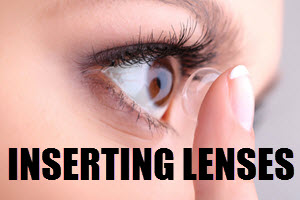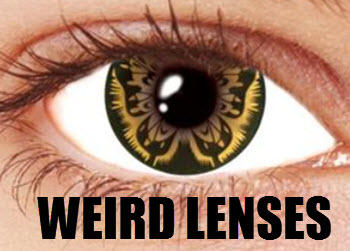Understanding Decorative Eye Lenses
Decorative eye lenses, also referred to as cosmetic or fashion lenses, are primarily designed to alter the appearance of your eyes. Unlike regular contact lenses, their primary function isn’t to correct vision but to enhance or completely change the color and style of one’s eyes. Understanding the nuances of decorative eye lenses, including their types, regulations, and potential risks, is crucial before purchasing and using them.
Consulting an Eye Care Professional
Consultation with an eye care professional is fundamentally important prior to the purchase and use of decorative lenses. Such professionals can conduct comprehensive eye examinations to identify any underlying eye conditions that may influence your ability to safely wear these lenses. They can also provide expert advice on selecting the appropriate size, fit, and lens material tailored to your individual eye characteristics. This consultation is a step that should not be overlooked, as it ensures that the lenses you choose are conducive to maintaining good eye health.
Understanding the Types of Lenses
Diverse types of decorative lenses are available in the market, each offering distinct changes to eye appearance:
Colored Lenses: These lenses are specifically designed to change the eye’s color. They are available in both opaque tints, which are suitable for a complete color change, and enhancement tints, which subtly enhance the natural eye color.
Circle Lenses: These lenses are designed to enlarge the iris, giving the wearer a ‘doll-like’ or youthful appearance. Circle lenses often contain larger diameters compared to regular lenses, creating the illusion of bigger eyes.
Custom Lenses: Often used for special events or cosplay, custom lenses can be designed to achieve specific effects or resemble particular characters. These tend to be more specialized and can significantly alter the eye’s appearance.
Checking for FDA Approval
Ensuring that the decorative lenses have the approval of relevant authorities, such as the U.S. Food and Drug Administration (FDA), is imperative. FDA-approved lenses undergo rigorous evaluation to ensure their safety and quality. This approval indicates that the lenses have been tested for potential risks and are considered safe for use within specified guidelines. Using lenses that are not approved can significantly increase the risk of complications such as infections, discomfort, or even more severe eye injuries.
Material and Comfort
When selecting decorative lenses, consideration of the material is essential for maintaining comfort and preventing irritation. Opt for lenses crafted from hypoallergenic materials to minimize allergic responses. Typically, soft lenses are considered more comfortable for extended use, though rigid lenses might offer sharper vision. Additionally, evaluating the lens’s water content and oxygen permeability is crucial. Higher levels in both attributes generally correlate with increased comfort and a reduced risk of eye dryness.
Lens Care and Handling
Proper care and handling of decorative lenses are vital to prolong their lifespan and preserve eye health. Here are some basic guidelines:
– Always wash and dry hands thoroughly before handling lenses to avoid introducing bacteria to the eyes.
– Use recommended solutions specifically designed for cleaning and storing lenses, avoiding tap water or any other non-sterile liquids.
– Follow the prescribed wearing schedule carefully. Over-wearing lenses can lead to discomfort and increased risk of eye complications.
Proper lens care is not only about hygiene but also ensuring the longevity of the lenses and overall eye well-being.
Risks Associated with Decorative Lenses
Wearing unregulated decorative lenses can lead to several issues. Possible complications include dryness, allergic reactions, or corneal abrasions that result from improper fit or poor-quality materials. In cases of continuous misuse or failure to adhere to proper care practices, more severe conditions could arise, such as corneal ulcers or infections. Such conditions hold a greater risk of resulting in permanent vision damage or loss. Awareness and caution in choosing quality products and using them correctly significantly mitigate these risks.
Conclusion
Choosing the appropriate decorative eye lenses goes beyond selecting an attractive design or color. It necessitates a thorough understanding of individual eye health needs, consultation with a certified eye care professional, and adherence to regulatory safety standards and usage instructions. Eye health should always be a priority, and making informed decisions in selecting and using decorative lenses is a key component in ensuring this priority is upheld. By taking these steps, individuals can safely enjoy the aesthetic benefits of decorative eye lenses without compromising their eye health.



 Cosmetic contact lenses
Cosmetic contact lenses